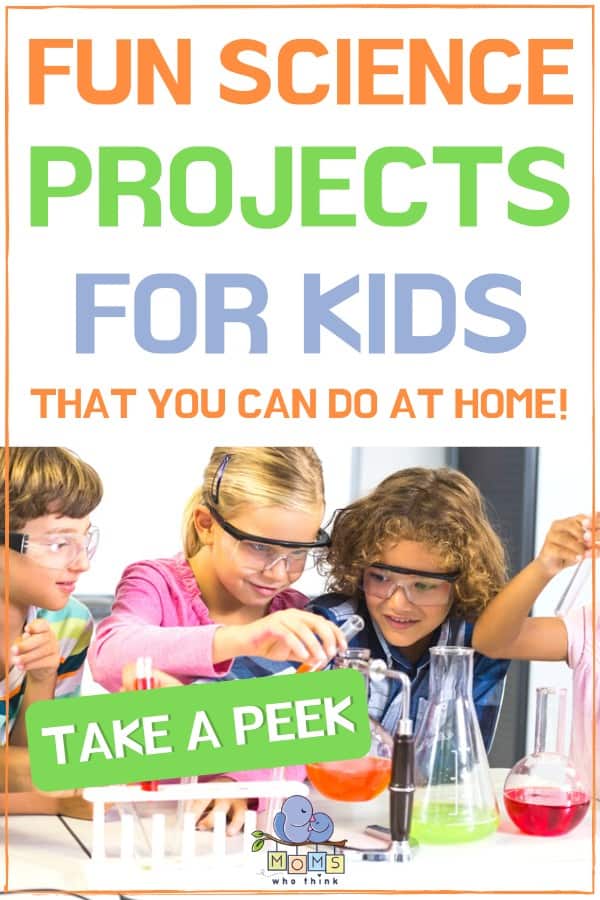These science projects for kids provide a fun way to learn about the world around us and are great activities for kids to ease boredom. Children find out how things work by trying these easy science projects. You can use them for a school assignment, or just something interesting to do on a Saturday afternoon. To keep your little ones occupied during summer break, check out more fun activities for kids.

Science Project 1: Make a Homemade Tornado
What you’ll need:
- 2 large soda bottles (2 Liter)
- Water
- Food coloring
- Glitter
- Metal washer
- Electrical or duct tape
- Scissors
Instructions:
- Clean out bottles, and soak them to remove labels.
- Fill one bottle almost full of water, 1 tsp of food coloring, and a little bit of glitter.
- Put the metal washer on the bottle opening.
- Take the second bottle and put it upside down onto the washer.
- Tightly wrap the duct tape or electrical tape around the two bottle openings and washer.
- Once the bottles are secured to each other, slowly tip the bottles back a forth a few times to check for leaks.
- When you are ready to make your tornado, quickly flip the water-filled bottle up to the top so the water rushes down into the empty bottle. As the water comes down, it will form a funnel, resembling a tornado. The food coloring and glitter will help this become more visible. You could also imagine the glitter is the debris that flies around when a tornado passes over the ground.
Science Project 2: Make Your Own Magnifying Glass
What you need:
- Thin piece of flat clear plastic, about 2 inches square
- A small piece of cardboard or 3×5 index card
- Tape
- Scissors
- Spoon
- Water
Instructions:
- Cut a hole about the size of a nickel or quarter in the cardboard or index card (depending on how big you want the lens).
- Tape the edges of the plastic to the cardboard so the plastic is centered over the hole.
- Dip the spoon in some water, and carefully place one drop on the center of the plastic.
- When you use your magnifying glass, be sure to keep it flat so the water doesn’t run off.
- Now, you can take a closer look at feathers, newsprint, fingernails, or any other small object.
Science Project 3: Demonstrate Bernoulli’s Principle
Bernoulli’s principle states that with something fluid (liquid or gas), high velocity creates a lower pressure and low velocity creates a higher pressure. This is used to explain the “lift” effect that helps planes fly. The air is moving more quickly over the top of the wing (higher velocity), and more slowly under the wing (lower velocity). That creates higher upward pressure from underneath and lower pressure on the top. Therefore, the wing moves up into the sky. This effect can easily be demonstrated with a high-velocity air column and balls.
What you need:
- Shop vacuum, leaf blower, or hair dryer
- Various-sized balls (ping pong balls, simple inflatable balls, large beach balls)
Instructions:
- Turn on the shop vacuum, leaf blower, or hair dryer with the air blowing straight up.
- Place one of the balls in the air column and watch what happens. Does it stay in the air column, or fall out? Try tipping the shop vacuum or hairdryer at a slight angle to see how far you can go before gravity takes over.
The fast-moving air keeps the balls moving upward, and Bernoulli’s principle explains how they stay in the air column. When the balls start to fall out, the higher air pressure outside the air column holds them in.